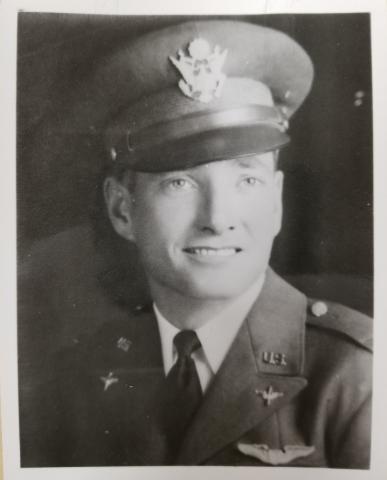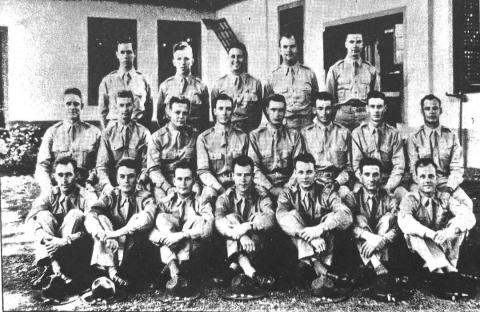Pre-WSC Life
Hughes was one of five children of Harry Sterling and Irene Hughes, both transplanted Midwesterners who settled in the farming community of Hover, Washington, now a ghost town a a dozen miles downriver from the present Tri-Cities community of Kennewick that is now a ghost town due to damming of the Columbia River.
WSC Experience
Hughes spent six years at WSC, presumably studying part time while working to support himself during the Depression. He joined the Washington National Guard from 1935-39, although whether from patriotic or financial reasons is unclear. Hughes was an engineering student who was a member of the catch-all Associated Engineers (1938) and the new, specialized American Society of Mechanical Engineers (1940). Hughes never graduated from WSC.
Military Service
On June 29, 1940 Hughes enlisted in the Army Air Corps at Fort Lewis, Washington. After commissioning as a second lieutenant he became a fighter pilot, and became part of the United States’ pre-war buildup of its forces in the Philippines, being assigned to the 24th Pursuit Group of the 20th Pursuit Squadron at Clark Field in Luzon (activated October 1, 1941). The Japanese bombed Clark Field only hours after the attack on Pearl Harbor, destroying most of the squadron’s aircraft. As 20th Squadron’s engineering officer, Hughes was responsible for repairing and maintaining the few remaining P-40 “Warhawk” fighter planes. After the surrender of American forces on the Bataan Peninsula in April 1940, Hughes survived the “Bataan Death March” and spent the next two-and-a-half years at POW Camp #1 in Cabanatuan. In the last year of the war, on the eve of the American assault to liberate the Philippines on the island of Leyte, Hughes was loaded with 1782 other POWs and 100 civilians onto a Japanese transport ship, the Arisan Maru, to be shipped back to Japan as forced labor. On October 24, 1944, the American submarine USS Shark found the ship 200 miles out from Luzon and sank it with three torpedoes. Only nine prisoners survived. Most of the others died when the Japanese abandoned them in the sinking ship and refused to rescue those who escaped.
Burial, Recognition, and Remembrance
Hughes’ body was never recovered. His name is included in the Manila American Cemetery in the section called “The Walls of the Missing.” He is also honored with a cenotaph in his hometown of Kennewick, Washington in the Riverview Heights Cemetery, and his name is included at the WSU Veterans Memorial.




